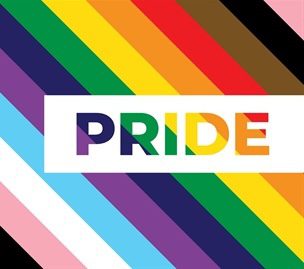
 Raul Rios, recently appointed head of strategy at creative agency Saylor, has led some of the first LGBTQ+ campaigns for global brands like McDonald’s and Lexus. With a passion for helping brands understand and utilize voices in the pride community, Rios explains what it takes to show up in a meaningful way.
Raul Rios, recently appointed head of strategy at creative agency Saylor, has led some of the first LGBTQ+ campaigns for global brands like McDonald’s and Lexus. With a passion for helping brands understand and utilize voices in the pride community, Rios explains what it takes to show up in a meaningful way.
How are social-first, creator-led campaigns reshaping Pride marketing?
Pride used to be a brand statement. Now it is a living, breathing conversation shaped by the creators who are closest to the culture.
Social-first, creator-led campaigns are flipping the script. Queer creators are not just featured, instead they are building the story from the start. That shift means the work feels personal, relevant, and real. Campaigns like NYX Pridemix are leading with voice, not just visuals. By letting artists like Zolita and Destin Conrad take creative control, NYX created something that felt organic to the platforms and the people watching. These kinds of campaigns are no longer add-ons. They are the main event. And they are redefining how brands show up and stay connected.
What role do LGBTQ+ influencers play in driving cross-platform storytelling?
Queer influencers are not simply amplifiers. They are co-creators of culture who move ideas across platforms with authenticity and power.
LGBTQ+ influencers bring depth to every message they touch. They do not just repost. They remix. Whether it is Josh Helfgott turning queer history into viral education or Pattie Gonia transforming outdoor advocacy into joyful drag performance, these creators add meaning that brands alone cannot manufacture. They meet the moment with clarity and care. And in a world full of content, that emotional credibility is everything. Influencers are the cultural glue that connects platforms, people, and purpose.
How is entertainment helping brands build lasting connections with queer audiences?
Entertainment is where stories live and where trust is built. It offers something traditional ads cannot, namely the emotional connection that lasts long after the screen fades to black.
A show like Overcompensating on Prime Video works because it comes from a real place. Benito Skinner brings the awkward, hilarious, and painful moments of queer coming of age into focus in a way that feels familiar to the community and intriguing to everyone else. That kind of storytelling makes space for recognition, not just representation. When brands align with stories that are this specific and this human, they gain something much more valuable than impressions. They gain relevance. They gain loyalty. They gain a real seat at the cultural table.
Why is it important for brands to show up authentically in culture?
Because showing up in culture is not about being seen. It is about being believed.
The queer community can tell the difference between performative gestures and meaningful presence. Authenticity means doing the work, asking the right questions, and building with intention, and not just showing up when it is convenient or marketable. Real connection requires consistency. It requires humility. It requires care. When brands invest in long-term relationships and stay involved beyond the big moments, they are not just participating. They are earning trust. And that trust is what turns visibility into value.







